Successfully transitioning into the cold season usually means adapting your fly-fishing approach. This doesn’t require a complete overhaul of your gear and tactics, but every season presents a new set of variables. As the seasons change, trout water can seem like a labyrinth — one that is constantly morphing, often making it feel impossible to navigate. The path that worked yesterday suddenly closes, forcing you to take another route. But one of the things that makes fly fishing so exciting is how the same body of water is always changing. It’s like driving to work every day and never having to take the same route.
I don’t claim to have the definitive roadmap for navigating winter trout water, but I can provide some tips that will be helpful for beginners looking to fly fish for trout during the winter season. This advice is borne of three decades of experience fishing winter creeks, streams and rivers, mostly those of central Pennsylvania. There will be exceptions to each of these tips as you move from region to region, but fly fishing in the winter for over 30 years has provided me with some dependable guidelines to plan a day of fishing in the cold.
Winter has a shorter bite window
What’s a bite window? It’s a common term used to describe the time period on a given day during which trout are actively feeding. Sometimes, it seems like every fish in the system is feeding with reckless abandon. Other times, you’re lucky to find even a few fish willing to bite. During the coldest days and weeks of the year, I’ve found it does not pay to be on the water at daylight.
Typically, late morning through early afternoon offers better opportunities for targeting feeding fish. The colder the night before, the longer it takes for the water to warm up to activate feeding behavior. This is not to say that you won’t ever find a hungry trout at daybreak during a polar vortex, but your odds of success will increase significantly if you focus on a 2–3-hour window late in the day. With temperatures at their warmest, you’ll also suffer less.
Except for spring creeks and tailwaters
It’s important to note that the above bit about bite windows applies to freestone streams, where water temperatures can fluctuate significantly between night, morning, afternoon and on into the evening. On tailwaters (rivers downstream of a dam) or spring creeks, where water temperatures fluctuate much less (sometimes little more than a degree or two during the entire day), then bite windows can occur early in the morning or at almost any other time of the day — even during the coldest parts of the winter season. In fact, some of the best night fishing I’ve ever experienced occurred on an Arkansas tailwater in January when air temperatures were close to 10 degrees. Despite the frigid air temperatures, the dam-released water from the bottom of the reservoir were more than warm enough for the trout to actively feed.
Fish slower and/or deeper water
Trout will slide into slower or deeper waters as water temperatures drop. While recently fishing a favorite freestone stream, 95 percent of the fish I’ve caught have been in water at least 20 inches deep and with a slow to moderate flow. Meanwhile, I’ve struggled to find trout in some of my favorite pocket water and shallow riffles which are my best producing waters during other times of the year.
My favorite types of water to target during the winter tend to be the transitional spots within pools and runs. I’ll certainly catch fish fishing the deepest and slowest sections of the stream as well, but most of my recent success has occurred in head of a run (where shallow water transitions to deep), tailouts (where deep transitions to shallow) and in transitional areas along the banks.

Slow your presentation, too
When nymphing during the winter months, I’ll often use a drop shot rig, so I can slowly crawl my nymphs just above stream bottom without the hassle of constantly hanging up. A drop shot rig is when your split shot is positioned at the very bottom of your tippet and your nymphs are attached above the split shot using droppers. The idea behind the rig is that as your split shot crawls and bounces along the stream bottom, your nymphs flutter in the current above. The drop shot approach stalls your presentation and keeps your flies in the strike zone for a longer period of time, which is sometimes essential when trout are feeding sluggishly during the colder months.
As for streamers, I’ll use jigs on a mono rig to bounce my streamer pattern slower and deeper. I’ll treat the jig like a nymph: casting upstream, allowing the jig to settle near the stream bottom and slowly jigging the streamer deep in the water column. A short up and down movement as the jig streamer travels downstream is all I want to impart to the fly, as too much speed or lift may turn a sluggish fish away. Though I love casting and ripping streamers for aggressive trout, I’ve found a slower presentation with the mono jig approach to be my best option during the cold water months.
And yes, dry fly opportunities do exist during the winter season. Midges offer some excellent surface feeding opportunities — typically when fishing slow-moving water during calm days. I’ll carry a dry fly leader (12-15’ 6X-7X) and a handful of midge dry flies anytime when water levels are low with little to no wind in the forecast.

Chase the sun
When hitting the water during the winter months, seek areas that, based on the topography and geography of the area you’re fishing, receive sun earlier and longer. There’s a section of a local spring creek I avoid fishing until afternoon because it runs through a narrow canyon and is in the shade most of the morning. So, I’ll walk above or below this section where the canyon opens and receives more sunlight during the day as these areas tend to fish better during extreme cold weather. I’ll do the opposite during the hot days of summer, when I’m searching for colder water.
When traveling to new waters that don’t have a local fly shop to consult, you can look at the water on Google Earth to get an idea on what areas may warm the quickest.
This is part 2 of a two-part series on winter fly fishing. Part 1 can be found here.

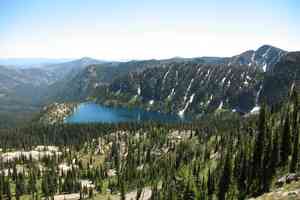
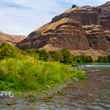



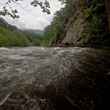
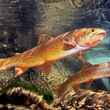
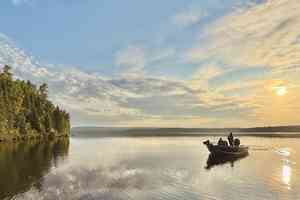
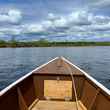
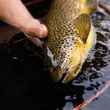
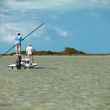

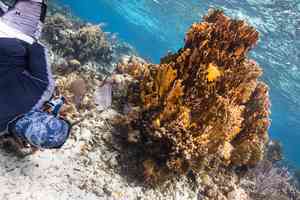
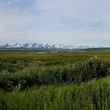

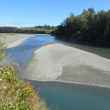

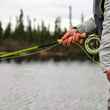


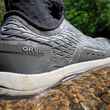
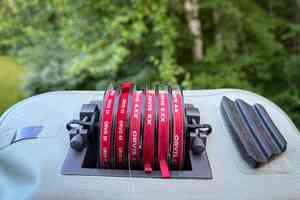
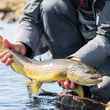
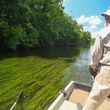
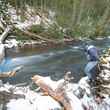
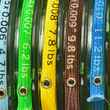
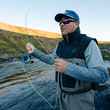

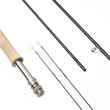
Comments